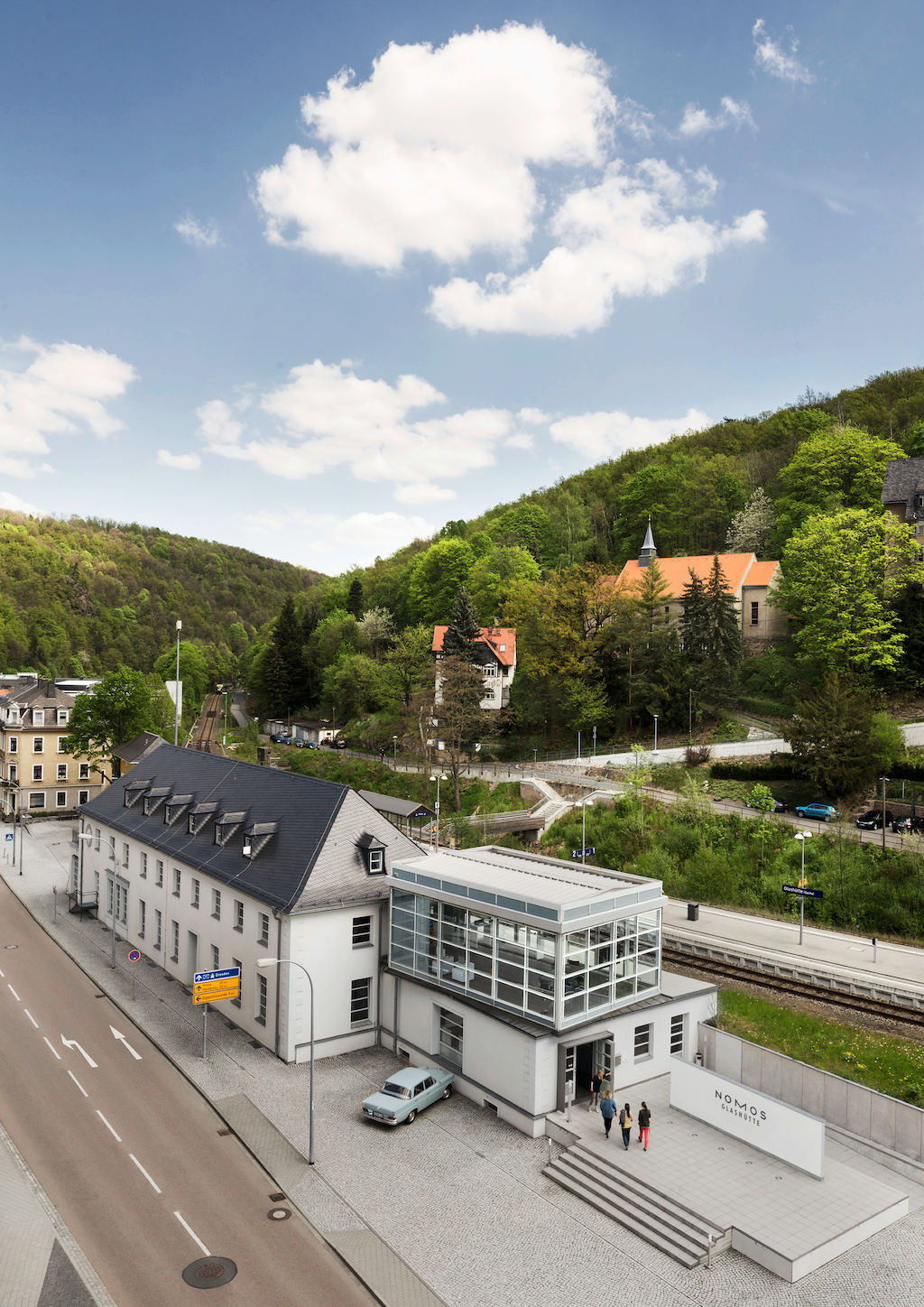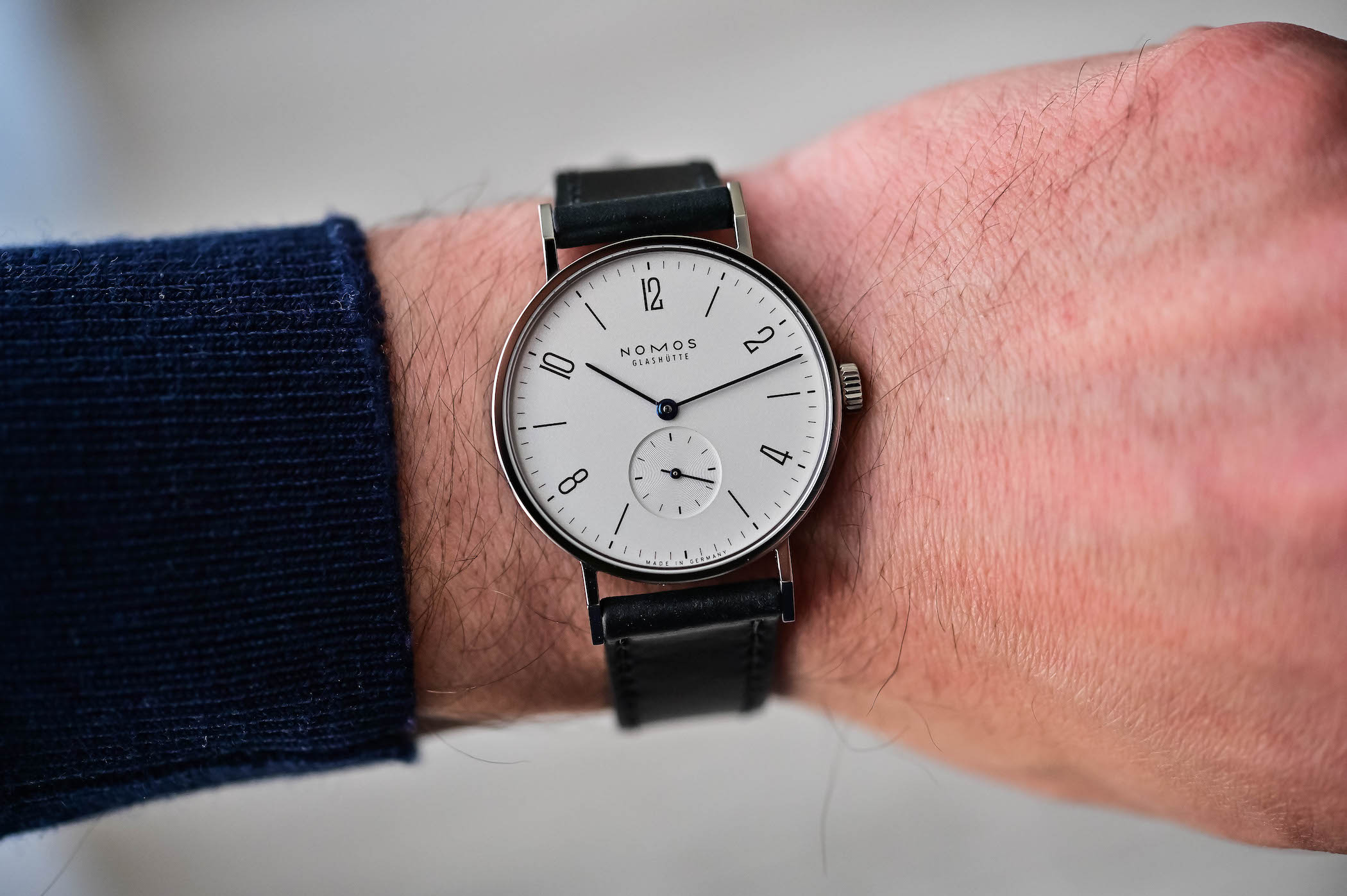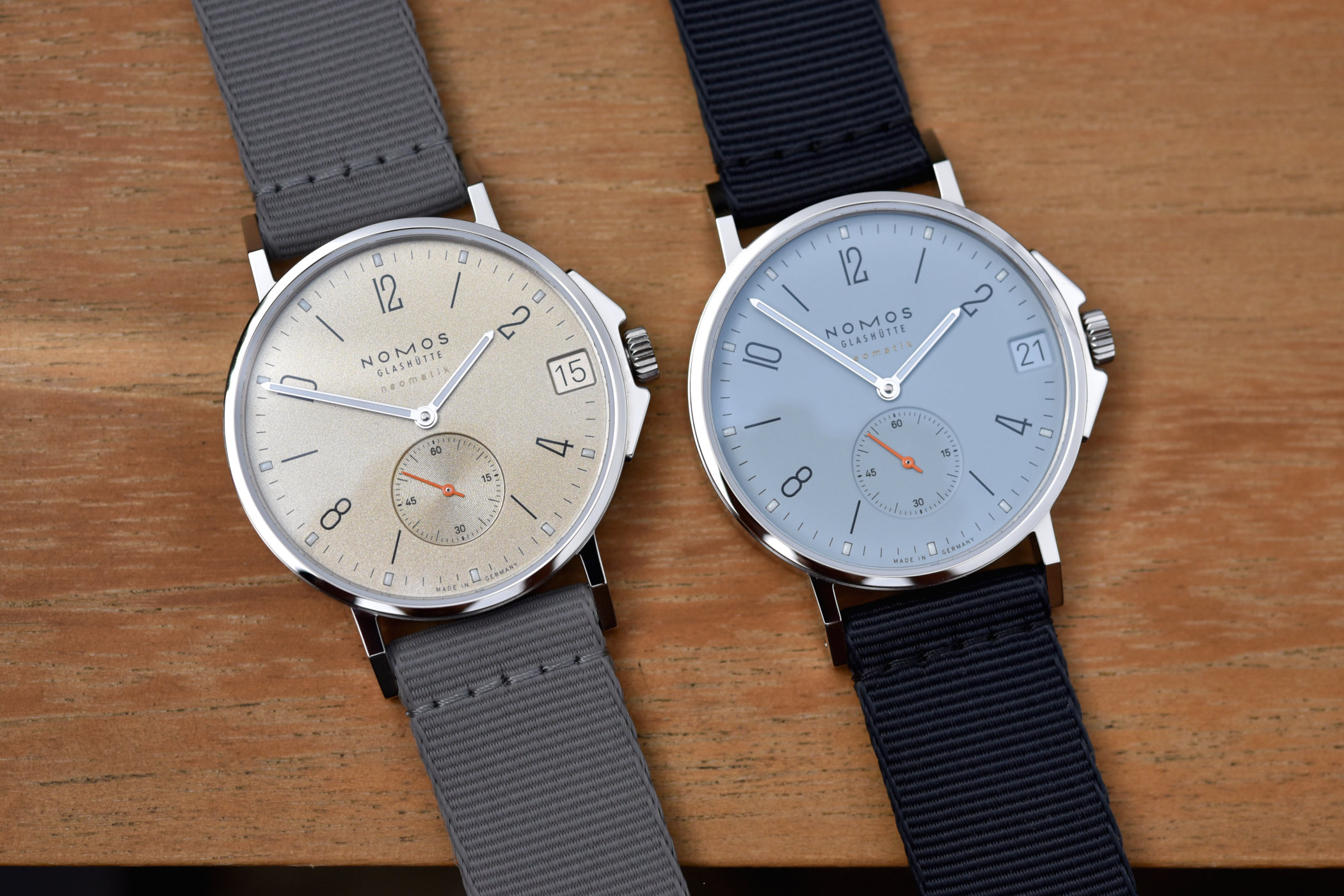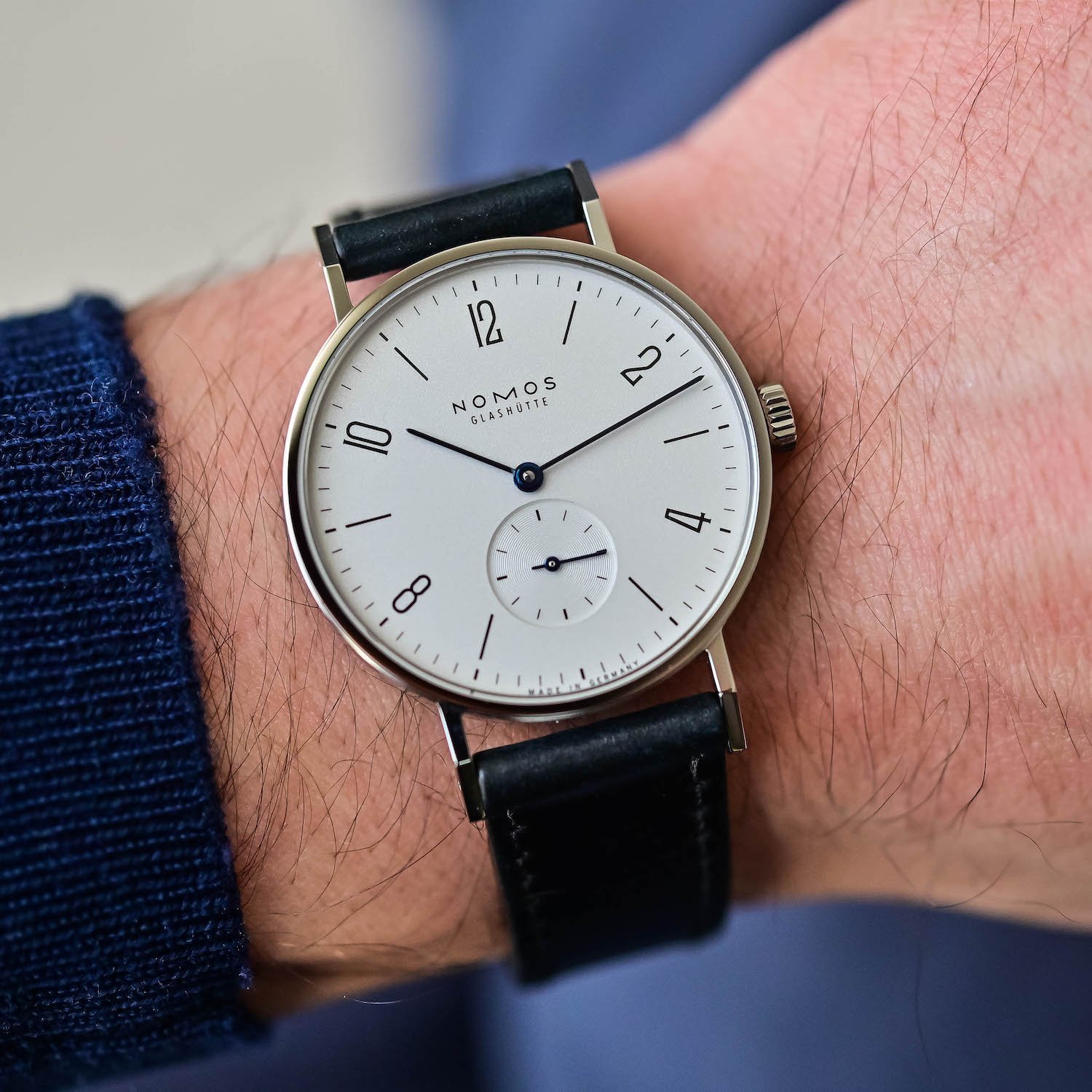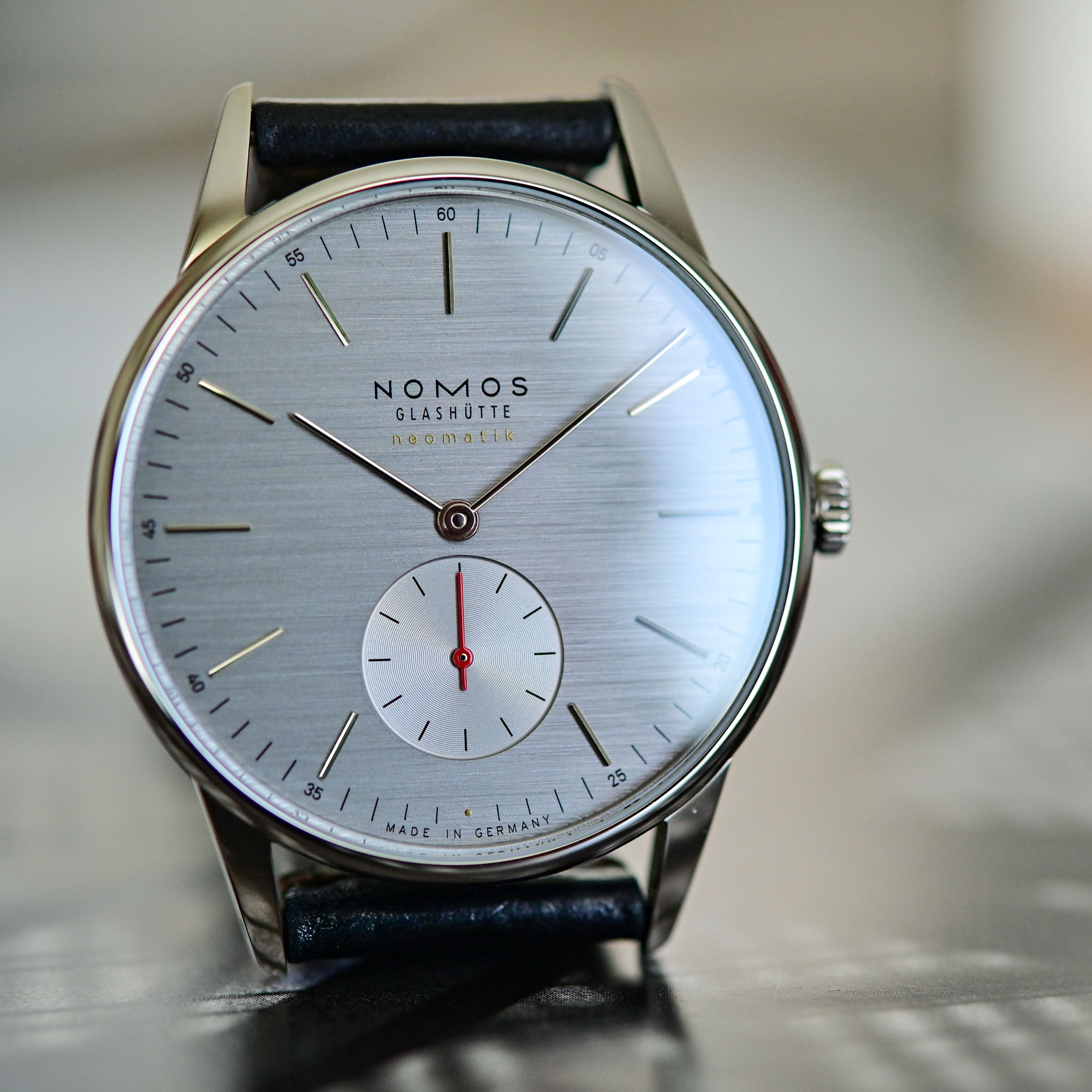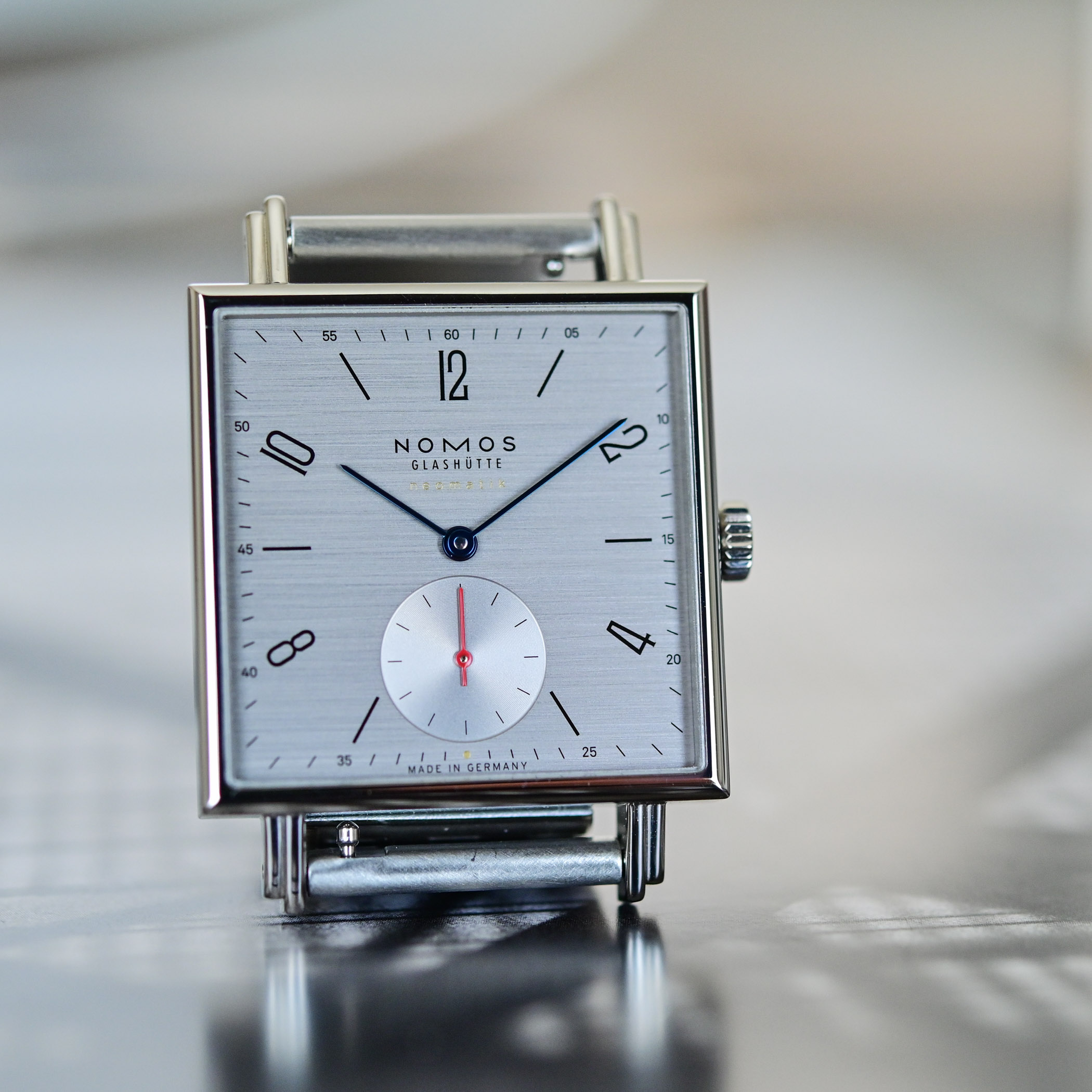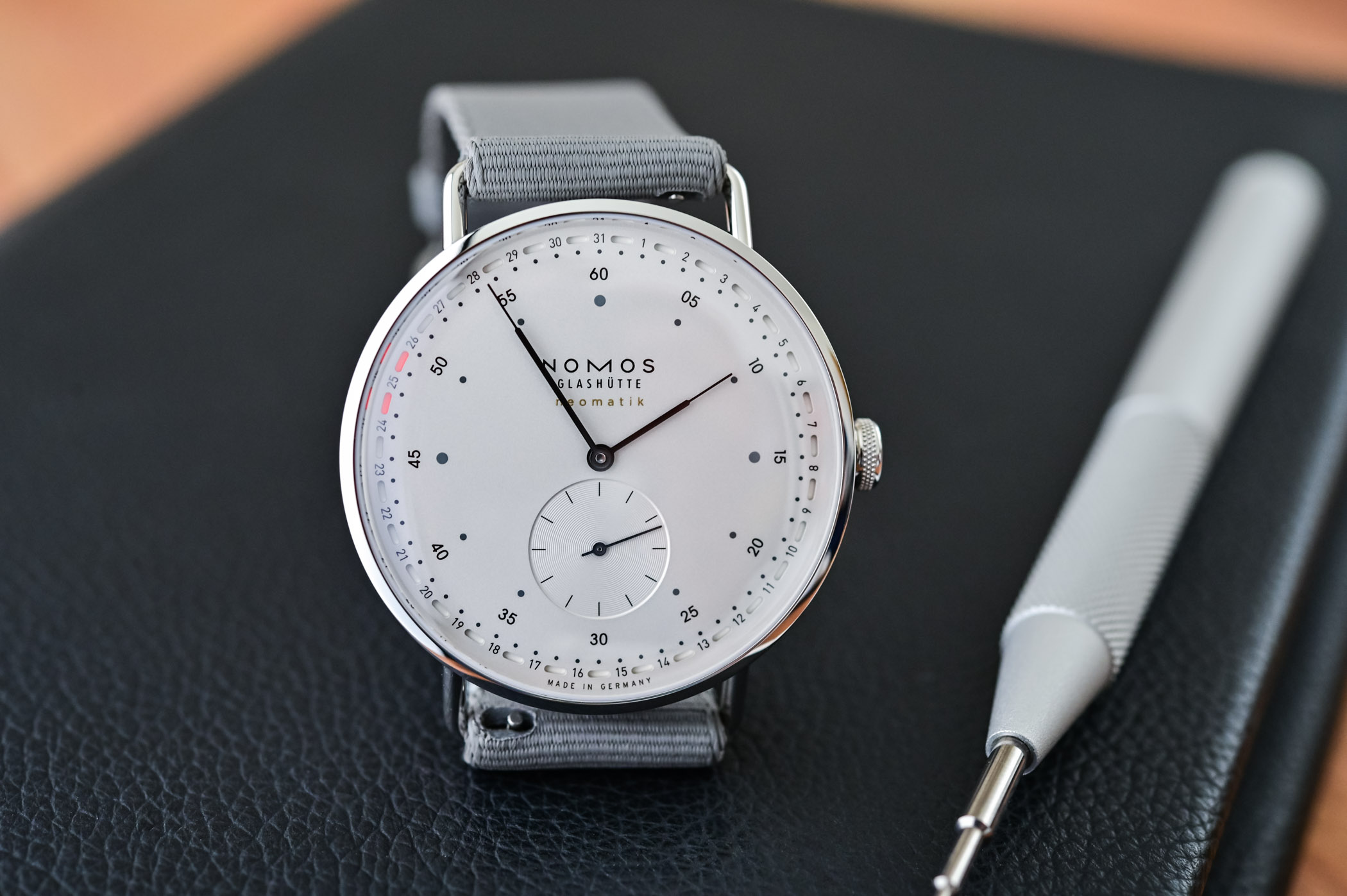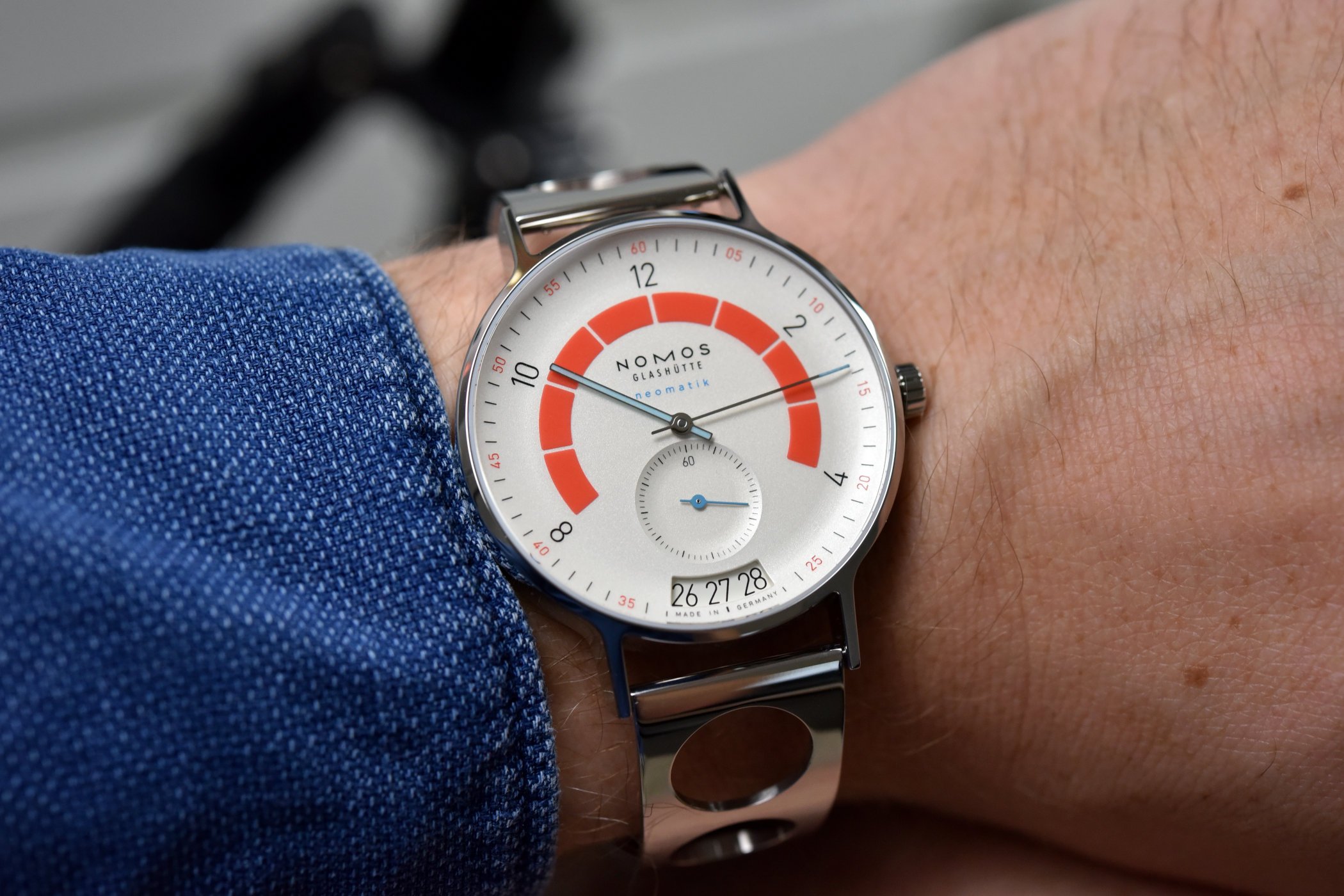Nomos CEO Uwe Ahrendt on the Significance of the Brand’s Glashütte Origins
Learning about what it means for a brand, its watches and its people to call the town of Glashütte home.
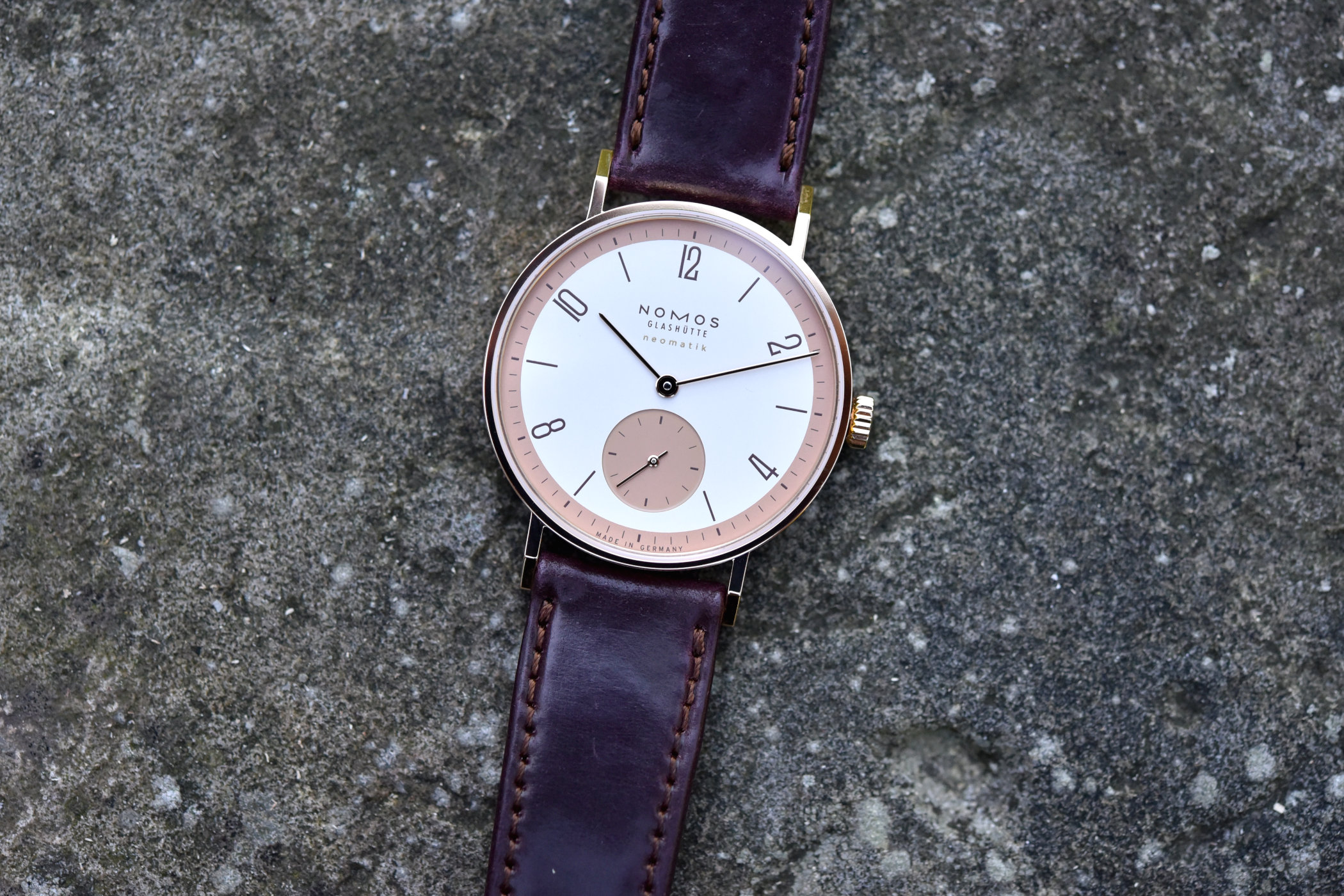
For more than 30 years, Nomos has been part of the monumental effort to resurrect the German watchmaking tradition that once thrived in the Glashütte region in the easternmost part of the country. The region is home to a dozen or so brands, from relatively affordable names like Union Glashütte and Nomos to ultra-high-end like A. Lange & Söhne and Moritz Grossmann, all honouring the Glashütte watchmaking heritage. Nomos is known for its lighthearted yet sobre Bauhaus-inspired design ethos and has amassed a strong community following over the years. Located in the town’s old train station, we recently visited the brand to check out some novelties and interview the brand’s CEO, Uwe Ahrendt, about the importance of this heritage.
Robin Nooij, MONOCHROME Watches – The fall of the Berlin Wall was a pivotal movement for the Glashütte region. Can you explain what this meant for the people and how it created the foundations for a brand like Nomos to build on?
Uwe Ahrendt, CEO for Nomos Glashütte – It was a key moment not only for Glashütte but also for Eastern Germany and the country as a whole. For Glashütte in particular, we were lucky there were still many trained watchmakers in the area. During the time of the GDR (the German Democratic Republic, the official name of East Germany before reunification), there was still a watchmaking industry here. However, production here wasn’t dedicated to luxury mechanical watches but to marine chronometers. There was still a good level of know-how in the town of Glashütte, and the fall of the Berlin Wall opened up huge opportunities for the area to thrive again. Reunification was extremely important for the people living in the area, as it opened the door to a brighter future.
For me personally, it was a very important step, and also for my own watchmaking heritage. My great-grandfather, grandfather and father were all watchmakers, and I have a background as a toolmaker for the industry, so I took a slightly different route but was still connected to watchmaking. It was only logical that the fall of the Berlin Wall would open up watchmaking for the town of Glashütte again. Our founder, Roland Schwertner, was, in fact, the first one to register new trademarks for the town of Glashütte, just before A. Lange & Söhne did. I joined Nomos in 2000, and back then, and even to this day, you can feel the company and everyone working for us is deeply connected to this historical moment.

So, you were the first registered new brand to launch a collection of mechanical watches coming from Glashütte. How does that resonate with the brand today?
We were genuine pioneers back then if you consider the circumstances. Similar to Günter Blümlein and Walter Lange with A. Lange & Söhne, Roland Schwertner saw a chance to create something new: a new brand to bring back watchmaking traditions to the Glashütte area and give people a chance to work towards a better future. It took us two years to launch the first series of watches: the Tangente, Ludwig, Orion and Tetra. These are still part of our brand portfolio today, which says a lot about how well they have been received.
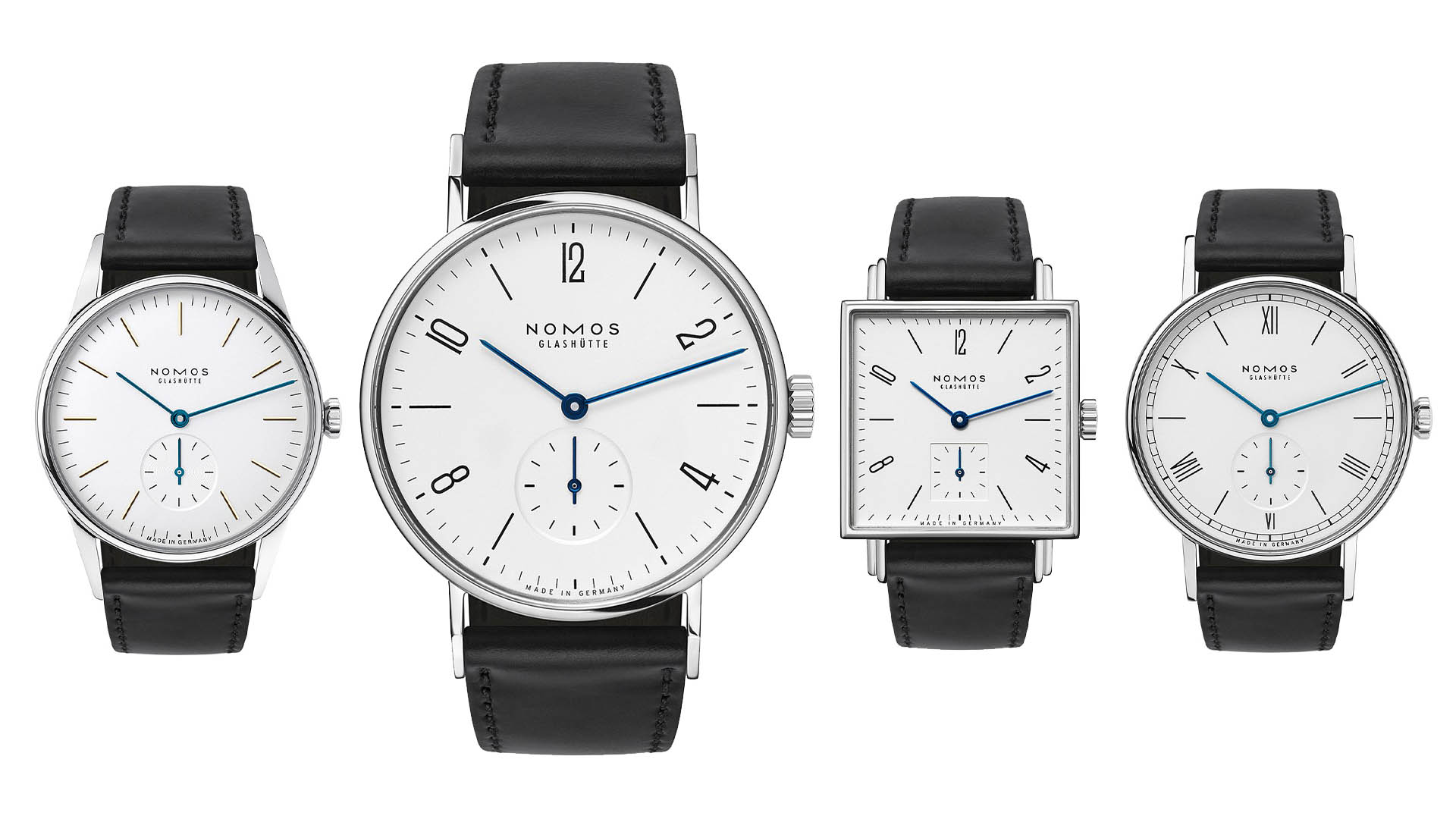
Talking about the Tangente, it remains our most popular watch, our icon, if you will. Simply put, what the Lange 1 represents for A. Lange & Söhne is what the Tangente represents for us. In over 30 years the design remains virtually unchanged, and it is still one of our absolute best-selling models. To me, it signifies not only how the public perceives Nomos but also how we feel about our products. Everything we do is still determined by what we started with in 1992. From this, we developed other collections and models as well, so in that sense, it’s very much a pillar for the brand, even though it has been slightly refined over time. I sometimes compare it to Rolex, which also incrementally updates its designs and movements. We work within that same ‘evolution, not revolution’ approach to our designs, improving the technical side but also retouching designs when and where needed.
And here’s a fun fact: new employees receive a Tangente on their first day and get to keep it if they make it through their trial period. Such is our confidence in the product, but also the people.
Can you explain what it means to feature “Glashütte” on your dials?
Having Glashütte on the dial feels very much like a challenge because I’m convinced that Ferdinand Adolph Lange is somewhere on the hills surrounding the town, watching over us and the work we do. All kidding aside, it’s very important to us. Not only because of our origins but also for the level of quality we strive for. The ‘Made in Glashütte’ indication is a protected designation of origin, indicating that a product is made here and meets specific standards. For instance, at least 50% of the value has to be added to the movement locally, so in this region. So even when brands use base movements from elsewhere, which some do, of course, they have to work on them in such a way that they meet the criteria that allow for the ‘Made in Glashütte/Sa’ or a derivative of that script to be placed on the dial.
What that means for Nomos is two things. One, it pushes us to stay true to German, and in particular, Glashütte watchmaking traditions, and protect that for the company’s and the region’s future. Two, it has also pushed us, at one point, to move away from third-party movements and start producing our movements in-house. We don’t want just one collection or one movement to be produced in-house but to have in-house movements across the entire range of collections. Since 2005, all movements used by Nomos have been developed and produced in-house. That all comes together, for us at least, in that small detail on every single dial: NOMOS Glashütte, Made in Germany.
What were the biggest challenges in rekindling the watchmaking heritage and craftsmanship of the Glashütte area?
Here I have to quote Roland Schwertner, to be honest: No Swiss, No watchmakers, No money. In all seriousness, that does sum it up. We had to start at zero and a challenge back then was finding qualified watchmakers to develop the first collections presented in 1992, but also today. Finding qualified craftsmen and women to build our watches is still an issue. We’re very happy where we are right now, but finding the right people is a struggle for pretty much all brands in the region.
For us, being an independent brand and not part of a conglomerate like Swatch Group or Richemont it also comes down to finding points of sales. Where to sell our watches, but also upscaling sales numbers, and of course, production capacity. We do not want to compromise on quality, obviously, so that has to be upheld despite the push for an increase in sales or expanding our retail network.
In 2005, you switched from third-party movements to in-house-produced movements. What fueled that decision?
That again comes down to a consciousness of the location we are in. If it were just down to creating a nice design, we could be anywhere in Germany, like Berlin or Hamburg, or anywhere in the world, for that matter. But if we want to pay our respects to Glashütte and the people who live here and work in the industry, we feel obliged to honour the legacy of the town. We can build a beautiful watch with nothing behind it, but in our minds, the quality and calibre also have to reflect and uphold the Glashütte tradition. It needs to have genuine substance. And it’s not only us but all brands from the area are committed to carrying the Glashütte spirit into the world.
What would you consider the biggest reason for Nomos’ success as a brand?
One of the reasons is our origins, coming from Glashütte and being among the first brands created after the unification, as we spoke about before. The second reason I believe we have been blessed with a high level of success so far is our minimalist design philosophy. You can identify a Nomos watch from across the room; this goes for all our collections. There’s a Bauhaus-inspired connection running through all Nomos watches. Then there are our innovations and technical developments, as very few brands have their own in-house developed escapement (the Swing System). Ultimately, it also comes down to the price, as we feel we’re offering something very good at a very fair price when you look at it from these perspectives.
How do you achieve and maintain such consistency across all collections – to the extent that Nomos is instantly recognizable – without becoming too repetitive?
If you look at the Tangente and Ludwig, for example, it would be easy to put the Ludwig dial in the Tangente case as they both look very similar at first glance. However, that’s not what we want to do. The Tangente is very straight and angular in a sense, with 90-degree angles and sharp lines, a flat crystal, angled lugs that elevate the case and so on. The Ludwig, however, is a bit more rounded, almost softer. This is also reflected on the dial, as the Tangente uses a combination of stick markers and numerals, whereas the Ludwig uses Roman Numerals. The crown is also different, further differentiating the two.
If you then look at the Orion, this rounds off everything even more, with a domed crystal and curved lugs, etc. And lastly, the Tetra is basically the square sister of the Tangente. So, in every Nomos collection, we strive for unity to an extent, but also a personal identity for each collection. They must look cohesive but also be different enough to justify being a separate collection. Each watch has its own typography, even for the date, and we try to stay faithful to the original design and move within that playing field. That goes for our oldest collections, but also the more recent ones like the Club Campus (2017), Club Sport (2019), Metro (2014) or the Autobahn (2018).
What would you think is missing for Nomos, if ever something is missing in your perspective?
Well, watchmakers are the first thing that comes to mind. I must admit I don’t have a straightforward answer because I don’t often get asked that question. Looking at our portfolio, I don’t feel there’s really something missing. We’re in a happy place with our watches, to be honest, but we are always looking into new ideas and developments; the future will provide you with a clearer answer.
We often look back on the 30+ years of Nomos, but what about looking ahead 30 years? Can you envision Nomos in 2053?
In 30 years, I will be in my eighties, so I hope the next generation has taken over by then. By 2053, we hope to have sold our one-millionth Tangente and been operating climate-neutral for many decades. We’re almost there now, by the way, reducing and offsetting our carbon footprint as much as possible. I am pretty sure mechanical timepieces will survive despite the fact we’re looking at and working with our phones all day. I really do think watches, especially mechanical ones, will be an attractive thing for people, something to enjoy, now and in thirty years. And it would be great if that is a watch from Glashütte or, better yet, a Nomos!
For more information, please visit Nomos-Glashuette.com.


